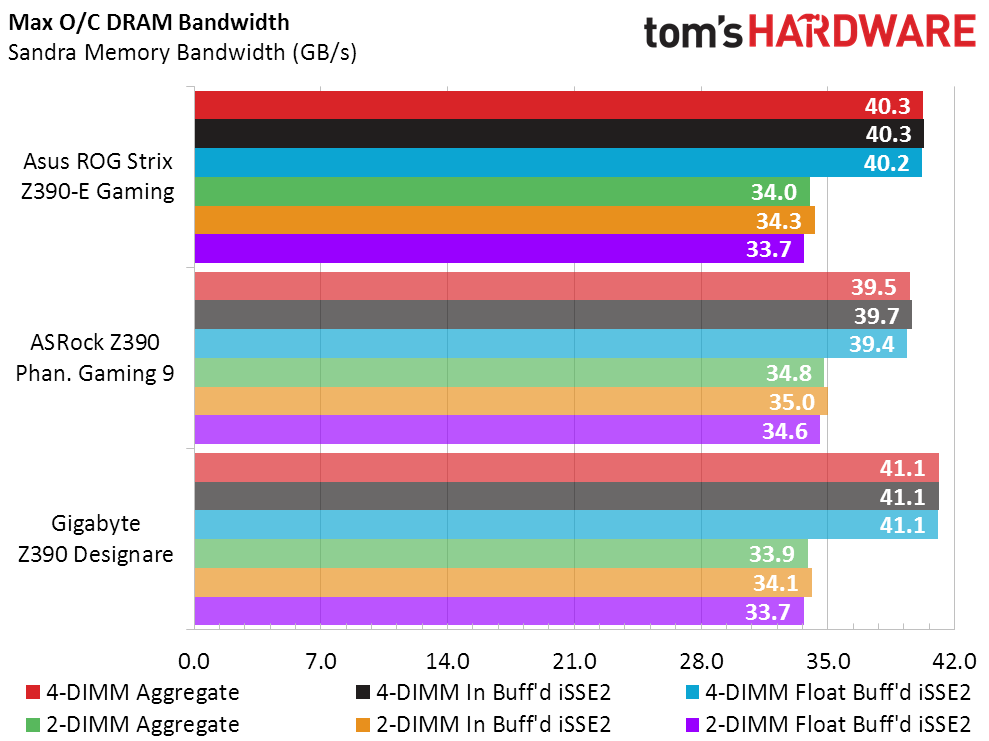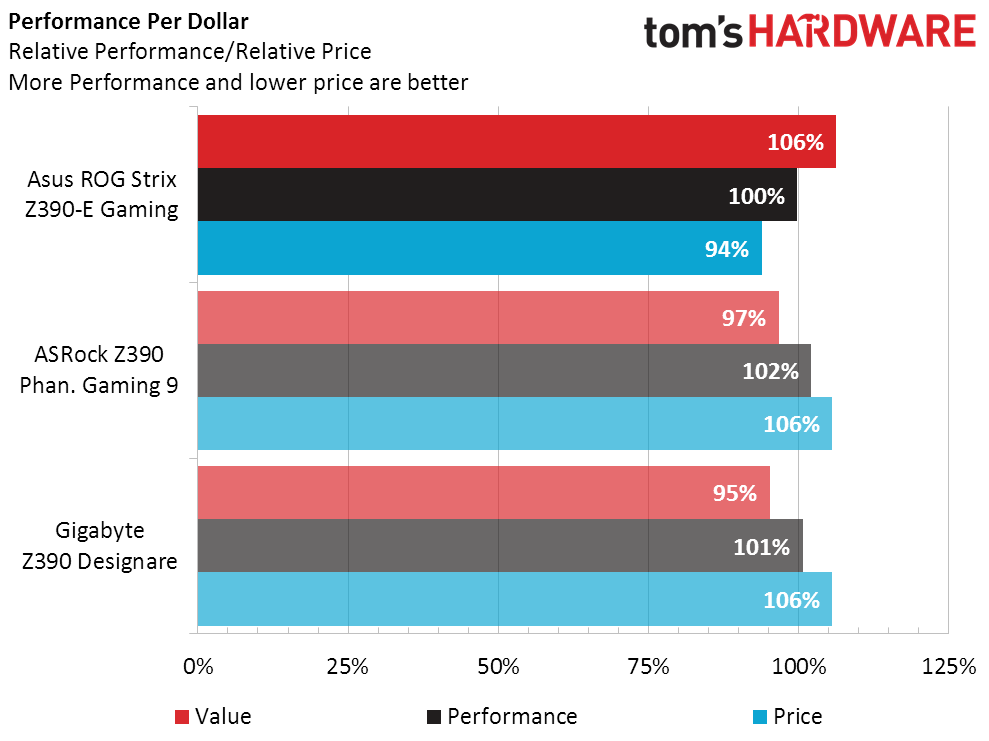Asus ROG Strix Z390-E Gaming Review: Stretching The Envelope
Why you can trust Tom's Hardware
Benchmark Results and Final Analysis
We enable every CPU power-saving feature in firmware, disable memory XMP, and disable any motherboard-set overclocks prior to our basic performance and power tests. Asus is one of the few companies that configures its long-duration CPU power limit to Intel’s default, so we disabled that function to keep all of today’s benchmarks competitive.
Synthetic Benchmarks
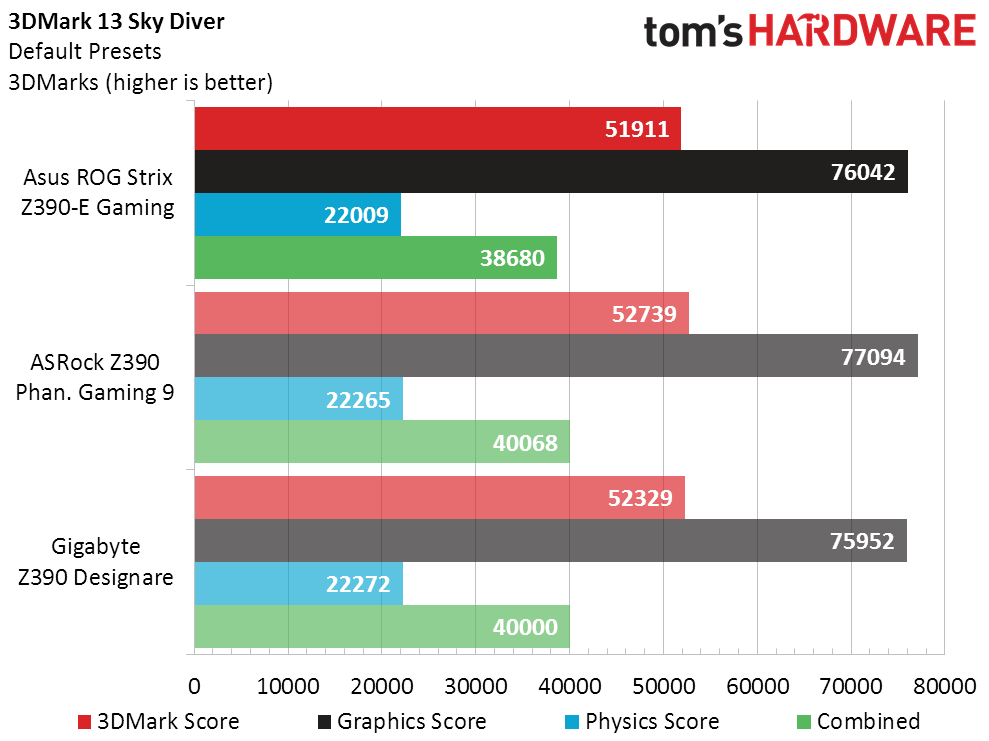
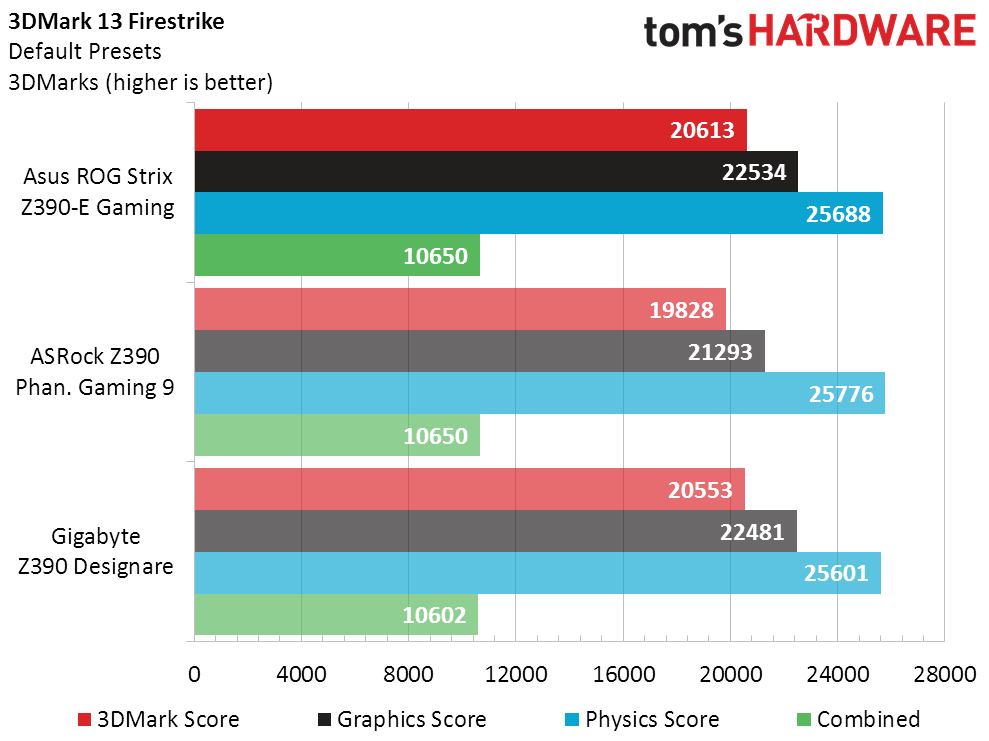
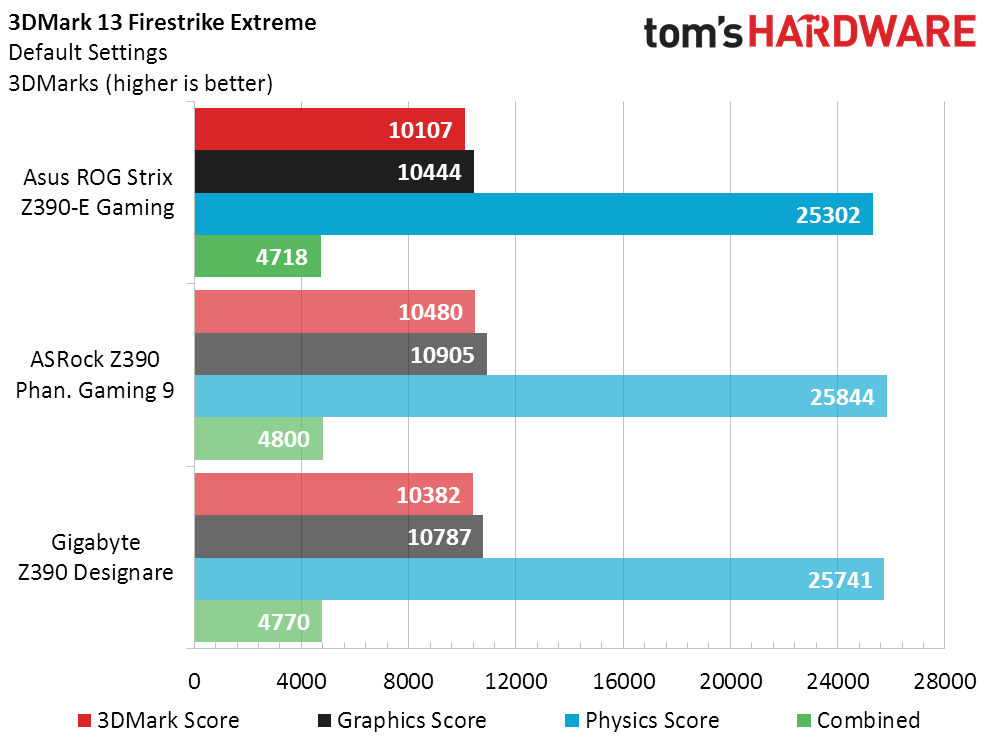
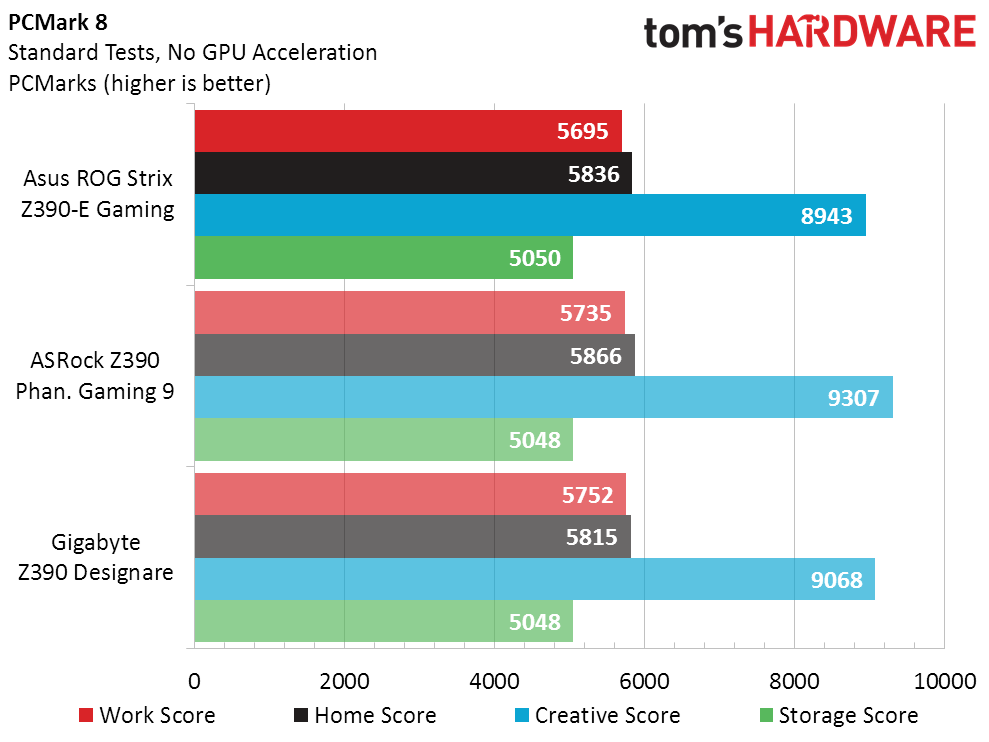



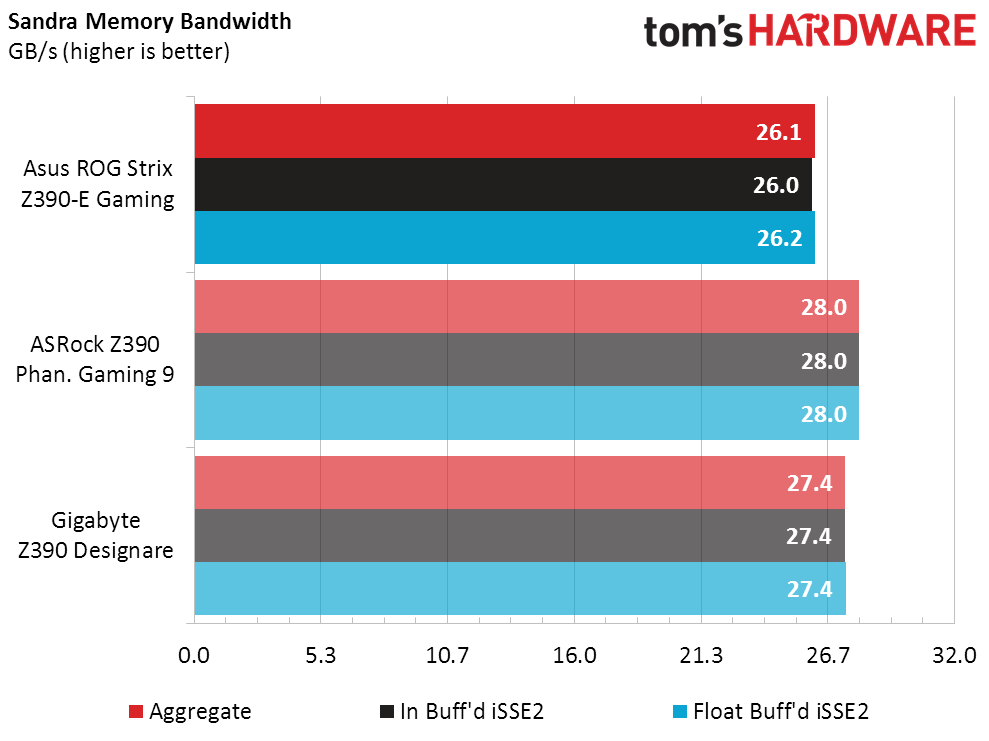
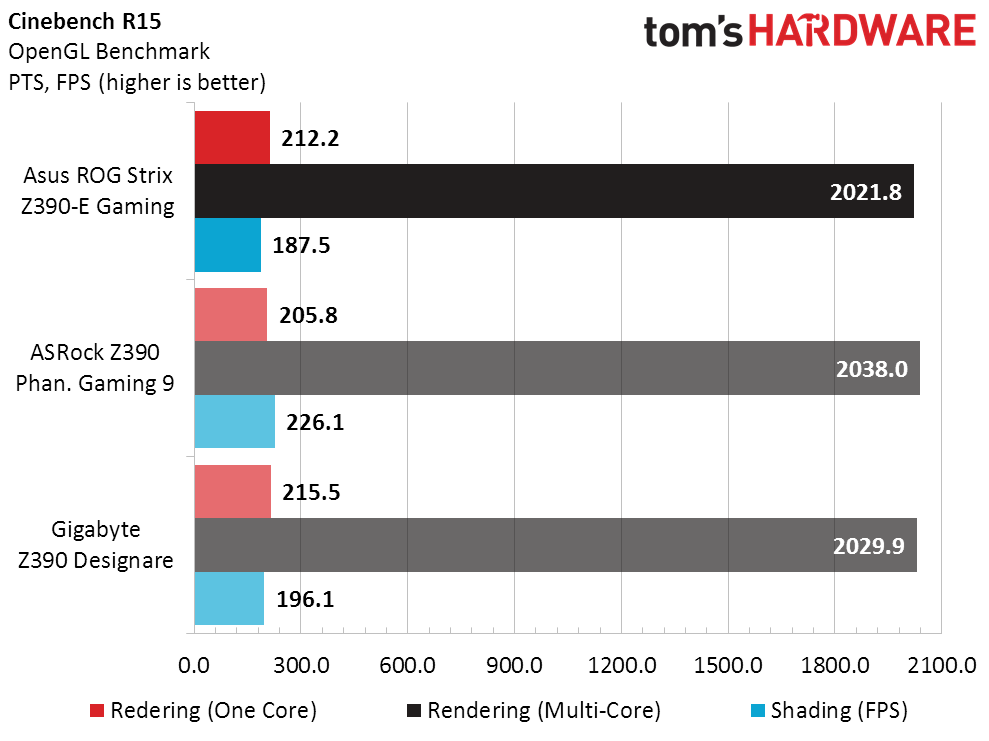

Though the Strix Z390-E Gaming finishes average in most of our synthetic benchmarks, a small memory bandwidth deficit at DDR4-2400 defaults likewise puts it behind in Sandra’s bandwidth-intense Cryptography test.
3D Games
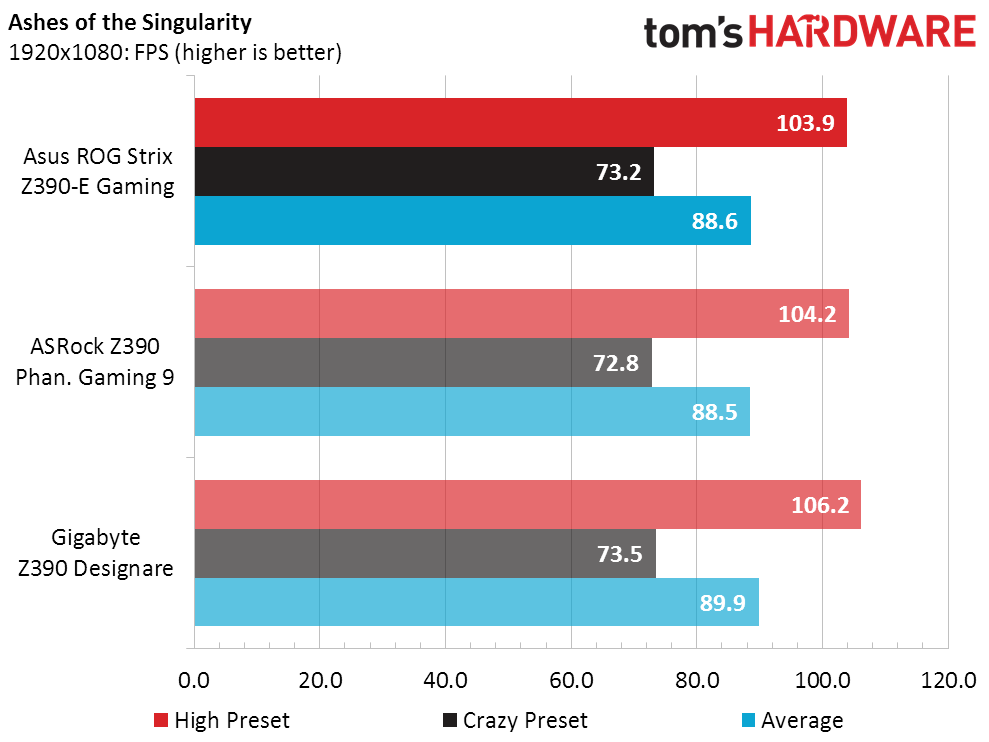
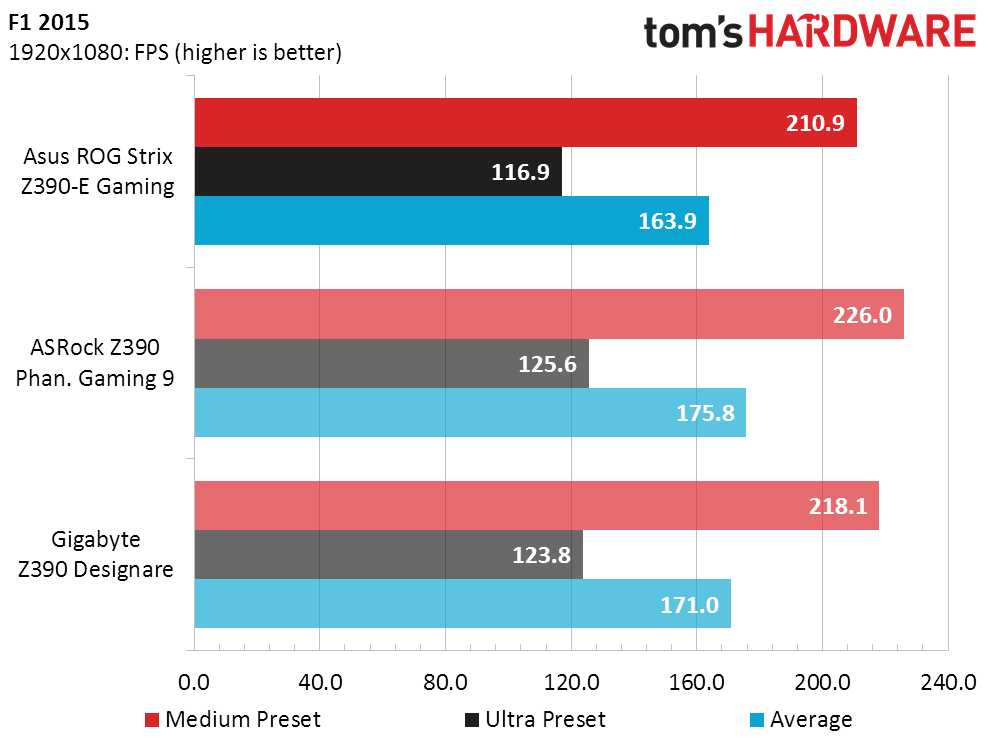


Slightly-reduced DDR4-2400 performance also hurts the Strix Z390-E Gaming at our lowest setting of Ashes, and that pain is amplified in the memory-bottlenecked F1 2015 tests. The board still pulls out a victory at the highest-quality settings of Talos, however.
Timed Applications
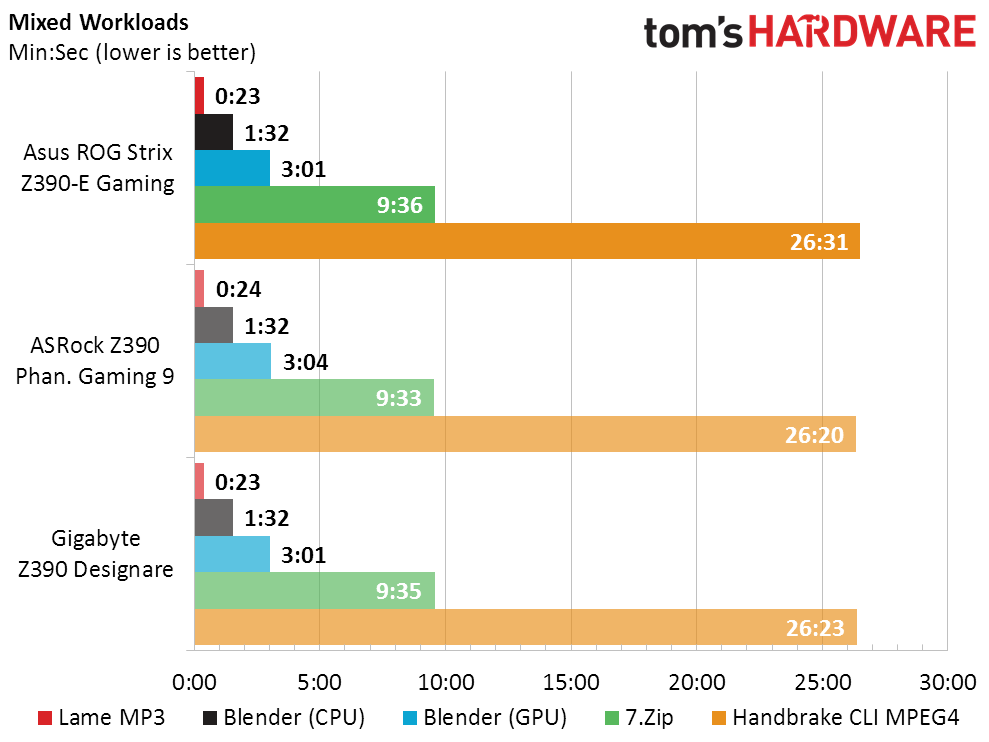
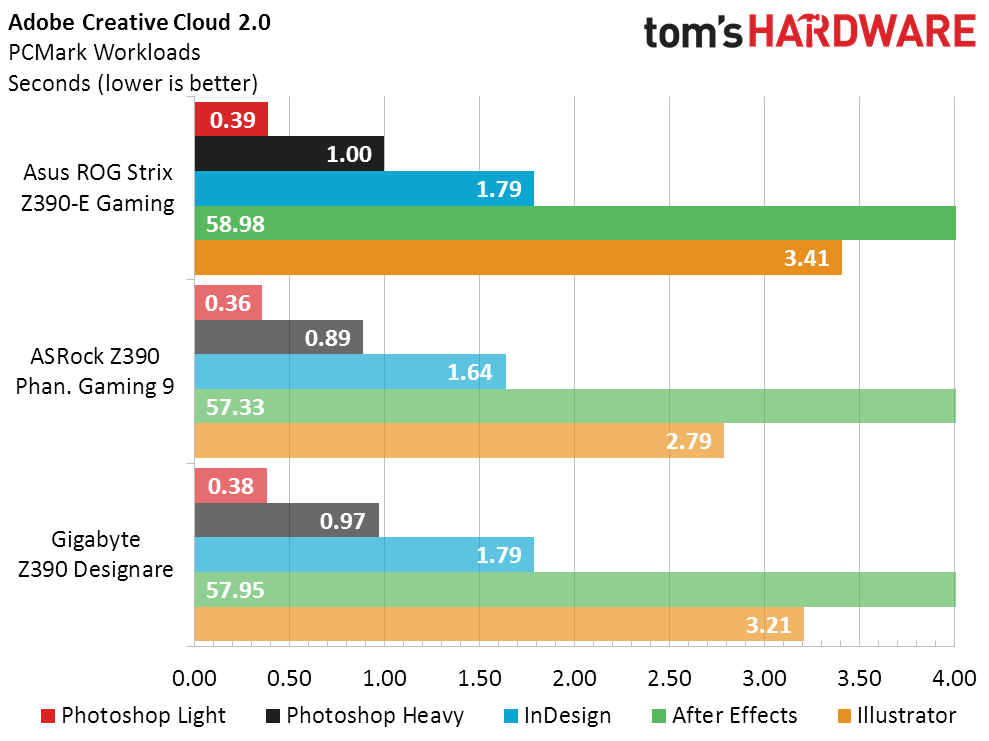
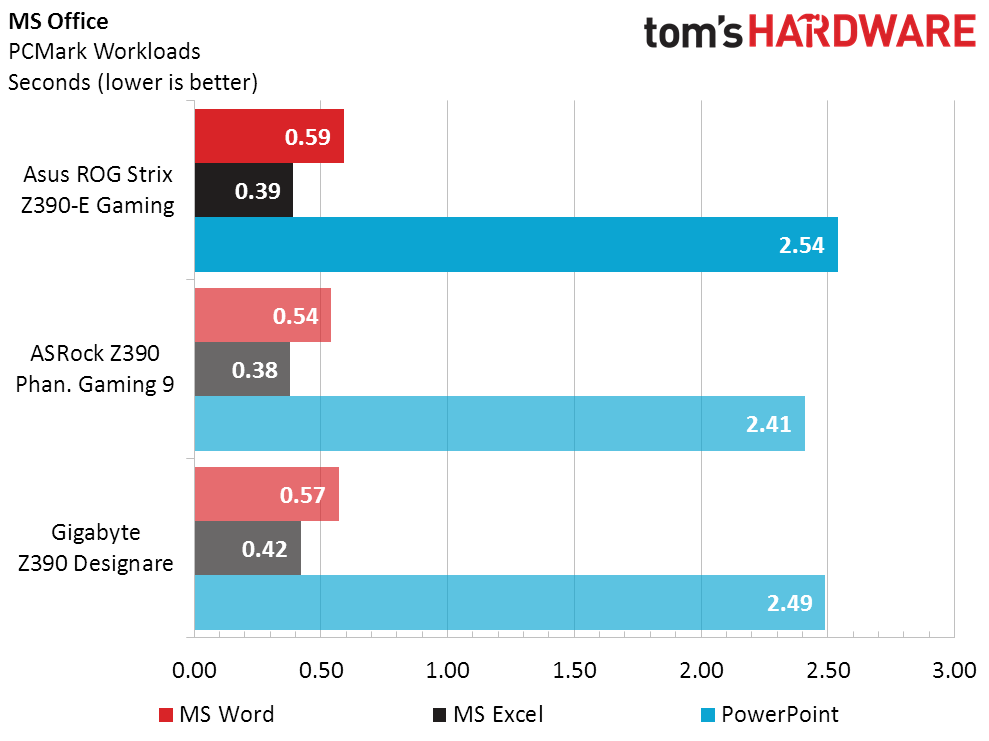
The Strix Z390-E Gaming loses by a mere second in 7.Zip, which is a benchmark we’ve actually used in DRAM performance analysis. It falls a full 20 seconds behind in Adobe Illustrator, and even loses by a few tenths (of a second) in PowerPoint.
Power, Heat, & Efficiency
The Strix Z390-E Gaming’s “ten phase” power regulator lacks the phase doublers that would make its 4x2 CPU core voltage controller a true eight-phase design, but the board still pulls better-than-average power numbers.
Since none of the other boards had a fan on the voltage regulator through our baseline thermal test, we left out the included part for the ROG Strix Z390-E Gaming’s charted value. We found a hot spot right under the place where the fan mounts, and adding it reduced the temperature of that spot by a substantial (but uncharted) 24°.
Our percent values are based on every board we’ve tested, including some terribly power-hungry models, as well as some dual-memory-slot boards that suffered the reduced performance of having only two ranks installed (ours are single-rank DIMMs). Strix Z390-E gaming performance still fell below that lowered average, though its efficiency appears quite excellent.
Get Tom's Hardware's best news and in-depth reviews, straight to your inbox.
Overclocking
All three boards pushed our CPU to 4.9 GHz, where the highest stable frequency it’s seen at this voltage is only 1% higher at 4949 MHz. All three boards were also similarly-capable of overclocking our Hynix-based Kingston DDR4-2933.
No performance fanatic is going to leave their memory at DDR4-2400, but we used that in our basic performance test because enabling XMP has occasionally allowed prior boards to sneak in a CPU overclock. Realistically, the Strix Z390-E Gaming’s high-frequency memory performance is spot-on, so that using it with any high-speed kit should eliminate any competitive program performance deficit.
Final Thoughts
We started this article by stating that the biggest reason mid-level Z390 enthusiast boards cost so much is that they’re expected to support the eight-core Core i9-9900K. On the other hand, the two most closely-priced competitors have different feature sets that might be a little more valuable to their target markets.
The Z390 Phantom Gaming 9, for example, has triple wired networking plus Wi-Fi, and one of its wired controllers is even 2.5GbE. Meanwhile, the Z390 Designare has Intel’s latest Thunderbolt 3 controller, in addition to dual Gigabit Ethernet and a Wi-Fi controller. Of course those competitors do cost $30 more: When we said closest-priced, we didn’t mean identically priced.
The problem for Asus concerning value isn’t its placement on the chart, but that it has far fewer features for relatively little less money. Then again, maybe you don’t want to pay for those competing features. Those building a showy system will certainly appreciate Asus’s more-advanced onboard lighting, and Asus buyers will surely appreciate the way ROG apps are so nicely integrated into its Ai Suite.
Want to write a comment on this story? Let us know what you think in the Tom's Hardware Forums.
MORE: Best Motherboards
MORE: How To Choose A Motherboard
MORE: All Motherboard Content
Photo Credits: Tom's Hardware




